
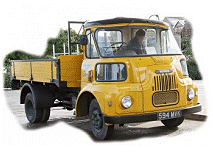

|
 |
|
|
Cars
and the Car Industry Motorcycles Scooters Road
Signs Licences Driving
Tests Road
Tax The Highway
Code Reg
Plate Numbers
Haulage Lorries and Trucks Vans London Transport Buses London Underground Milk and Ice Cream Vans & Chimes Emergency Services Hovercraft Passenger Airlines and Aircraft Charter Airlines London Airports British Railways Cruise Lines, Liners and Ferries Military World Speed Records: Land Water Two Wheels Air Steam Trains Electric Trains Other Trains Transport Industry Events and Timeline - 1950 to 1969 Transport Videos and Links The Mini Moke Metrication TV / Radio Detector Vans Major Road Construction and Motorway Services |
 |
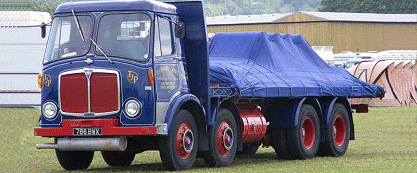 |
The Associated Equipment Company
was a British vehicle manufacturer that built buses, coaches and lorries
between 1912 and 1979 under the AEC brand name (and ACLO in Latin America).
They produced military vehicles during World War Two and, in 1946, formed British United Traction Ltd (BUT) as a joint venture with Leyland to manufacture trolleybuses and traction equipment for diesel railcars. In 1948 AEC acquired Crossley Motors and the Maudslay Motor Company, setting up ACV (Associated Commercial Vehicles) Ltd. as the holding company. ACV was taken over by Leyland Motors Ltd in 1962. In 1961 ACV acquired Thornycroft. That name then disappeared from all the vehicles except specialist airport crash tenders and the Antar tractor unit. Production of the AEC Dumptruk was transferred to Basingstoke, and the Thornycroft six-speed constant-mesh gearbox and later nine and ten-speed range-change versions were fitted to AEC, Albion and Leyland buses and lorries. All AEC double-decker buses ceased production in 1968 and its last buses, coaches and lorries were made in 1979. The company is most famously associated with the iconic Sixties 'Routemaster' double-decker bus. |
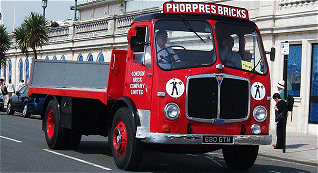 |
| Seddon Atkinson Vehicles
Limited is a British manufacturer of large haulage vehicles formed in
1970 when Seddon Diesel Vehicles Limited of Oldham acquired Atkinson Vehicles
Limited of Preston, who were founded in 1907 and originally manufactured
and repaired steam wagons. Seddon were a commercial vehicle producer who assembled vehicles from bought-in proprietary components. Robert and Herbert Seddon were the sons of a Salford butcher who, just after the First World War in 1919, used a Commer with both van and charabanc bodies to transport goods during the week and run excursion tours at the weekends in partnership with a dairy man called Foster. As 'Foster & Seddon' they expanded into the reconditioning of old vehicles and held an agency for Morris Motors vehicles. They also, originally, ran a bus service between Swinton and Salford which they subsequently sold off to Salford Corporation. In 1937 Robert Seddon began designing and building commercial diesel-engined lorries, manufactured from proprietary units, to address an identified 'gap' in the vehicle market. |
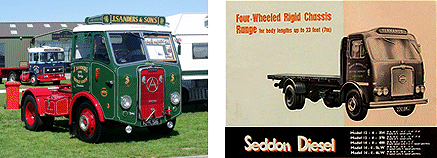 |
 |
Bedford Vehicles
was a brand of vehicle produced by Vauxhall Motors. The brand was established
in 1930 and built commercial vehicles. A leading international lorry brand,
it had substantial export sales of light, medium, and heavy lorries throughout
the world. The Bedford TK range was produced in large numbers from 1959 and it formed the basis for a wide variety of derivatives including fire engines, military vehicles, horse-boxes, tippers, flat-beds and many specialist utility vehicles. A British Post Office (British Telecom) version known as 'The Polecat' was used for the installation of telegraph poles and the British Armed Forces still use another variant, the 4-wheel drive Bedford MKs. |
Foden Trucks was a British company founded in 1856, in Sandbach, Cheshire, by Edwin Foden, manufacturing steam-powered vehicles. Differences of opinion within the company resulted in Edwin, and his son Dennis, being 'fired' by the directors, most of whom were family members. 'Paid off', with an agreement not to partake in the building of commercial vehicles, Edwin relocated to Lancashire. In 1933, his son Dennis started his own engineering company near the Foden works, manufacturing both the cabs and the chassis of his own Gardner diesel-powered vehicles. In honour of his father, Edwin Richard Foden, the company was named ERF Ltd and the company expanded rapidly, gaining partnerships with Gardner and Perkins for the supply of power units. ERF was bought by Canadian truck manufacturer Western Star in 1996, closing its Sandbach factory in 2002. In 1958 lightweight glass-reinforced plastic (GRP) was introduced in cab production and led to the manufacture of the first British-built, mass-produced tilting cab in 1962. The first Foden GRP cab was the S21 model, nicknamed both 'Spaceship' and 'Sputnik' by the commercial vehicle press, but was more popularly known as the 'Mickey Mouse'. The more traditional metal-and-wood S20 cab, introduced in 1956, was still fitted to many Foden lorries until 1963, after which it was just fitted to special vehicles until 1968. Competitive pressure, brought about by PACCAR's purchases of Foden, DAF Trucks and Leyland Trucks influenced their decision to sell ERF to MAN AG in 2007 and the use of the ERF marque name finally ceased. Foden was acquired by PACCAR (producers of American 'Kenworth' trucks) in 1980 and the marque name ceased to be in use after 2006. |
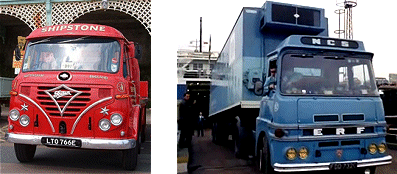 |
 |
Guy Motors was a vehicle manufacturer,
based in Wolverhampton, that produced cars, lorries, buses and trolleybuses.
Founded in 1914 by Sydney S. Guy, it operated out of its Fallings Park
factory from 1914 to 1982. Although new designs were being produced and
performing well, the company were in financial trouble by 1960 and entered
into receivership in 1961, when they were acquired by Sir William Lyons,
managing director of Jaguar, who transferred all its assets to a new company,
Guy Motors (Europe) Limited. Guy continued to be successful throughout the 1960s, with the development of the Victory trambus and the 'Big J' series of trucks, designed around a new, high-revving Cummins V6-200 engine coupled to a 12-speed splitter-type gearbox, and was intended for motorway operation. They continued to be successful throughout the 1960s but the series of mergers (see timeline) that ultimately ended with the formation of the British Leyland Motor Corporation in 1968 resulted in Leyland ceasing the production of Guy-badged buses in 1972. Due to the success of its 'Big J' range, Guy Motors was one of the few companies owned by BLMC operating at a profit but, despite this, Leyland decided to close the Fallings Park plant in August 1982 as part of their business rationalisation. |
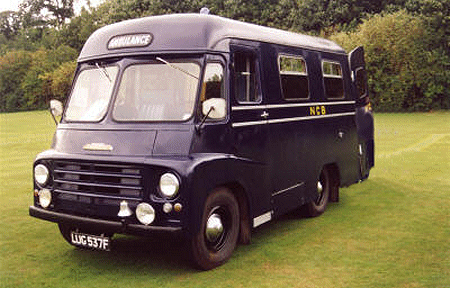 |
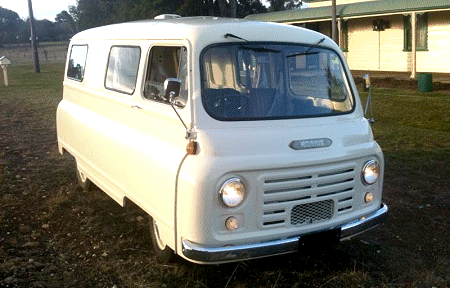 |
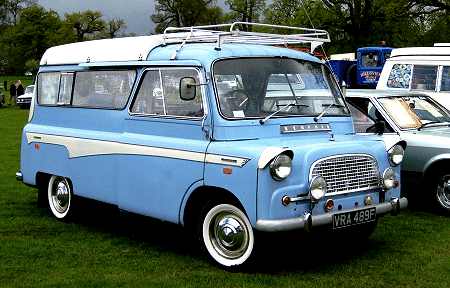 |
|
1967 Morris LD |
1966 Morris J2 |
1967 Bedford CA dormobile |
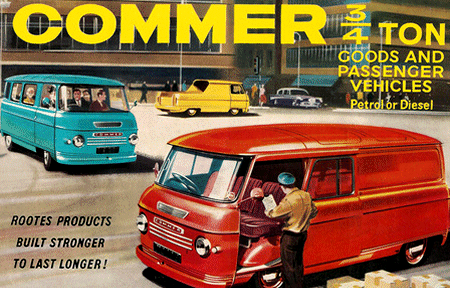 |
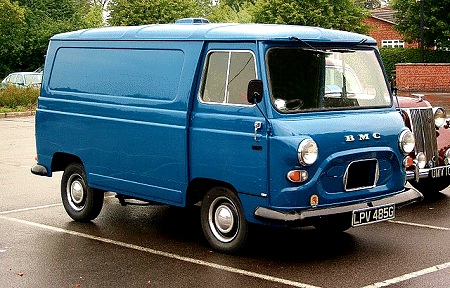 |
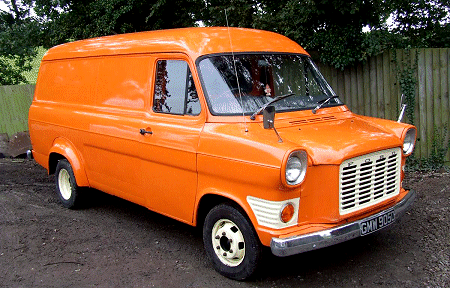 |
|
Commer 1500 Advert |
1968 BMC J4 |
1966 Ford Transit |
| Almost unbelievably, milk was commonly delivered to your doorstep transported by horse and cart until the early 1960s. Local people would have heard the clop clop of the horse's hooves, probably knew its name and maybe even allowed it to graze on the trees and grass in their garden. Electric-powered milk floats were their replacement. Designed specifically for dairy deliveries, their top speed was an unimpressive 25 miles an hour. To some extent replaced, or at least complementd by, the internal combustion engined versions for longer routes, the last bottle of milk was delivered on a milk float not all that long ago.... |
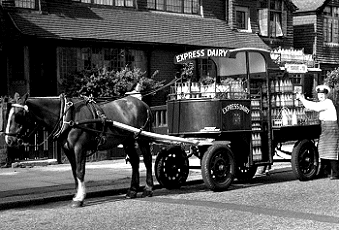 |
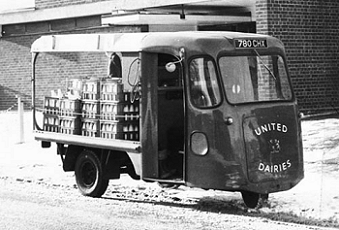 |
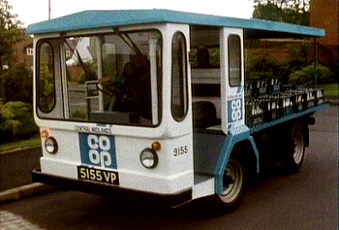 |
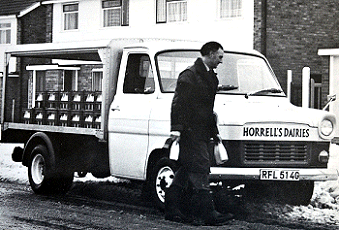 |
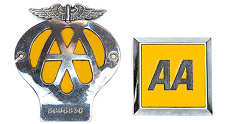 |
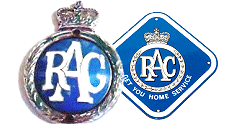 |
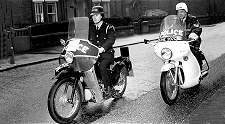 |
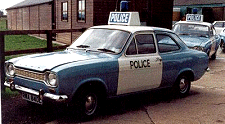 |
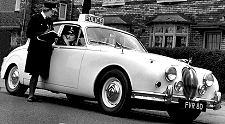 |
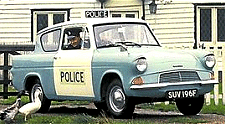 |
|
AA
|
RAC
|
Police Motorbikes
|
Ford Escort 1960s
|
Jaguar 1960s
|
Ford Anglia 1960s
|
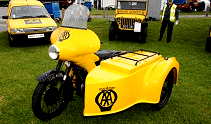 |
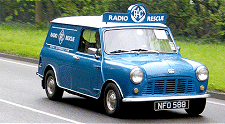 |
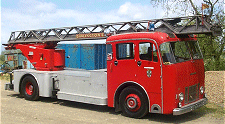 |
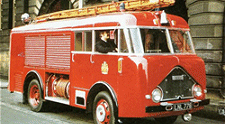 |
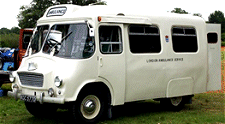 |
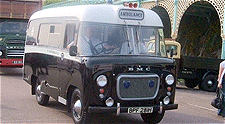 |
|
AA Motor Patrol
|
RAC Minivan
|
Leyland Fire Master Metz
TL - 1960
|
Dennis 1968
|
London Ambulance 1966
|
BMC 1969
|
 |
       |
| The first omnibus service
in the UK was initiated by John Greenwood between Pendleton and Manchester
in 1824 although 'stagecoach' services, including local travel, had
already been in existence for many years. Greenwood provided the first
'pay and ride' service with 'request' stops en route. The first recorded
use of the term 'omnibus' was in France, in 1826. George Shillibeer started the first horse-drawn omnibus service in London, in 1829, which expanded to other major cities over the next few decades and 'double-decker' carriages were introduced in the 1850s. Despite the growth of suburban railway services, horse trams (from 1860) and electric trams (from 1885), horse bus services continued to grow and, by 1900, 3,676 were operating in London alone. Experimental services using steam-driven buses had been tried in the 1830s, but legislation passed in 1861 prevented widespread use until the law changed in 1896. In the year following this change, some experimental motorised services were tried with petrol-driven internal combustion vehicles in various places. 1903 saw the introduction of a bus service in Eastbourne and also one operated by GWR running between Helston and The Lizard. Motorised bus services operated by companies such as BET (The British Electric Traction Company) and the various regional rail concerns led to a major decline in the use of horse buses. In the capital, some of the previous horse bus companies, the LGOC (London General Omnibus Company) and TTL (Thomas Tilling Ltd), introduced motor buses from 1902 and The National Steam Car Company started operating steam bus services in 1909. Over the next five years, BET gradually started to establish itself as a national service provider while LGOC exerted dominance over the London business forcing their major opponents TTL and National to move further afield. National changed its name to The National Omnibus and Transport Company (NOTC). Many smaller local companies were started following World War 1 and, by the end of the 1920s, most of the railway companies had ceased to operate separate bus services, preferring to hold interests in private companies. |
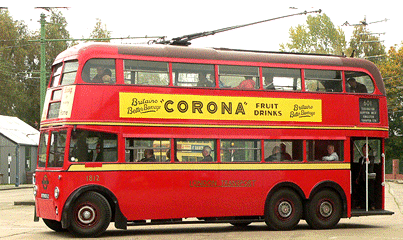 |
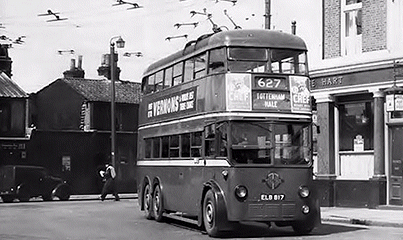 |
TTL and BET
combined to form the Tilling & British Automobile Traction Company
(TBATC) in 1928. The new company was a separate concern from BET and
continued to acquire interests in many other smaller operators. Meanwhile,
NOTC transferred their operations to Eastern National, Southern National
and Western National, all of which were jointly-owned by railway companies.
The Road Traffic Act 1930 applied some regulation to bus services,
eliminating many small operators and significantly reducing competition
between the various services. TBAT acquired the NOTC services in 1931 to leave the 'big three' (Tilling, BET and TBAT) - who were all essentially part of the same 'group' - with most of the transport power in England, while Scotland was dominated by SMT (Scottish Motor Traction). In 1933, control of bus operations within a radius of approximately 30 miles of London was compulsorily transferred to the newly-formed London Passenger Transport Board, effectively 'nationalising' bus services in the London area. TBAT was wound up during the Second World War, in 1942, with all its acquired companies being transferred to TTL. Nationalisation was pursued by the post-war Labour government who, with the passing of the Transport Act 1947, created the British Transport Commission and acquired the operations of TTL, SMT and a large independent concern called Red & White. With the nationalisation of the railways, the BTC also acquired interests in many of BET's companies, but BET was not actually forced to yield its services to nationalisation at that time. The Sixties Between the late 1930s and the beginning of the Sixties London had the biggest trolleybus network in the world. They had a top speed of 30mph, needed little maintenance and drew their power from wires hanging above the street, but there was a tendency for the collecting poles, the 'trollies', to spring off the wires, necessitating realignment by the bus staff with the help of long bamboo poles. By the 1950s buses were increasingly looking like a much more flexible, although more expensive, option due to the constant changing of roadway access routes and introduction of one-way systems so, in 1954, London Transport announced that all trolleybuses would be replaced by a new diesel bus, the AEC Routemaster. |
| The progressive withdrawal
from around the London network started in 1959 and took place over
several years. The last service in the City of London, operating out
of the Moorgate and Holborn termini, closed in November 1961 and the
final trolleybus journeys took place on 8th May 1962. In 1962 the
BTC bus companies were transferred to the Transport Holding Company,
to which BET sold all its UK bus companies following the Transport
Act 1968, resulting in nearly all of the UK bus service industry being
owned either directly by the government or by municipalities. The Transport Act 1968 was intended to rationalise the publicly owned transport services and create a framework wherein subsidies provided support for uneconomic but necessary services. English and Welsh bus companies in the Transport Holding Company were transferred to the new National Bus Company, country services provided by London Transport were transferred to the NBC, THC Scottish companies were transferred to the Scottish Transport Group and the municipal bus services in 5 other metropolitan areas outside of London, including some companies operated by THC in those areas, were transferred to the new Passenger Transport Executives. By the early 1960s London was experiencing increasing problems caused by both traffic congestion and the difficulty of recruiting sufficient staff to operate all their services. In preparation for a possible experimental service to be carried out in central London the LTE ordered 33 front entrance Leyland Atlantean buses, suitable for one man operation, towards the end of 1962. Six 'standee' buses were also ordered. However, when the London Transport Board replaced the LTE on 1st January 1963, they immediately entered into talks with the unions about service reforms that resulted in the unions making counter-claims and banning overtime and rest day working. An independent commission was set up to resolve the situation, reviewing the pay and conditions of bus drivers and conductors in light of manpower requirements and working, and operating conditions in London traffic. An interim report produced on 12th December ended the overtime ban and led to agreement for: a) operation of larger vehicles with more seats and the experimental introduction of front entrance vehicles b) an introduction of one man operation (OMO) to suburban areas, including the conversion of some country double-decker routes to OMO using front entrance buses c) The introduction of 'standee' services (as originally recommended by the Chambers Committee in 1953) with flat fares and automatic fare collecting equipment. The first central London 'standee' operation, called the 'Red Arrow' service, was introduced on 18th April 1966 using rear-engined 36 ft AEC Swifts that had standing room for 48 passengers and seating for 25. Passengers entered at the front and paid a flat fare of sixpence (2.5p) into coin-operated turnstiles called 'passimeters'. The Swift was a 33' rear-engined single-deck bus (built by AEC between 1964 and 1974) that was also available in a 36' length version referred to as a 'Merlin'. Its design was considered to be suited to driver-only operation and was the favoured alternative to the traditional double-deckers operated by a driver and a conductor as British legislation prevented driver-only operation of double-decker buses until the late 1960s. The largest fleet of Swifts was operated by London Transport and London Country, with over 1500 in total delivered between 1966 and 1972. The 'Red Arrow' experiment was carried out fairly successfully in central London so, on 14th September 1966, the full Reshaping Plan was finally announced, initiating an attempt to introduce major route re-organisation and operational changes throughout the network. However, the public in general disliked the changes and, with the Merlins eventually proving to be unsuitable, the plan had been largely abandoned by 1973. |
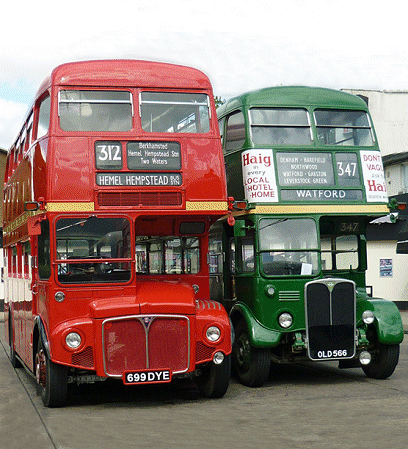 |
 |
    |
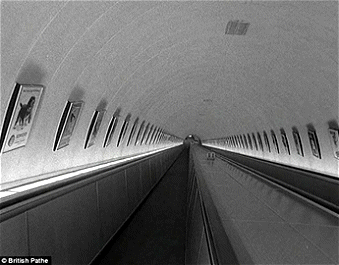 |
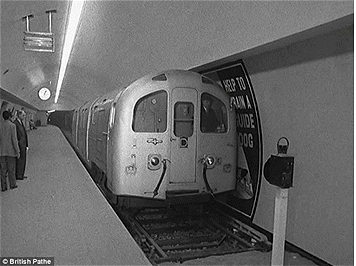 |
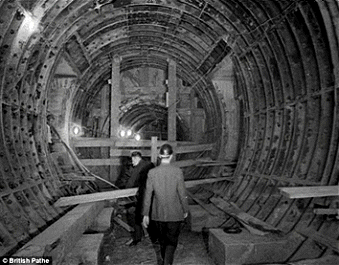 |
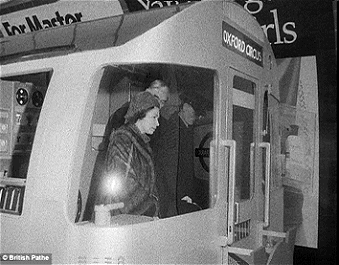 |
|
A 'new-look' London Underground station, with its long escalators, during the 1960s |
A brand new tube train
makes one of its first
journeys on the London Underground in 1960 |
Workers building the
Victoria Line in the 1960s.
It was opened by Queen Elizabeth II in 1969 |
Queen Elizabeth II
at the controls of a Victoria Line
train when she opened the line in 1969 |
|
There have been a number of schemes to bring monorails to London, including one suggested in 1967 by the GLC Department of Highways and Transportation that proposed a monorail service to run along Regent Street and Piccadilly. |
|||
|
|
All
Original Material Copyright SixtiesCity
Other individual owner copyrights may apply to Photographic Images |